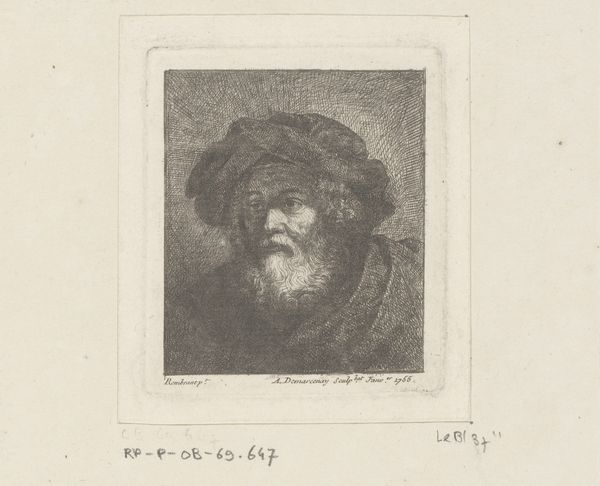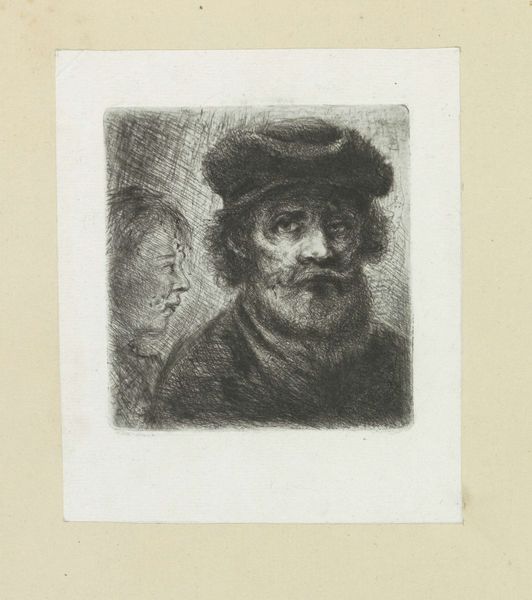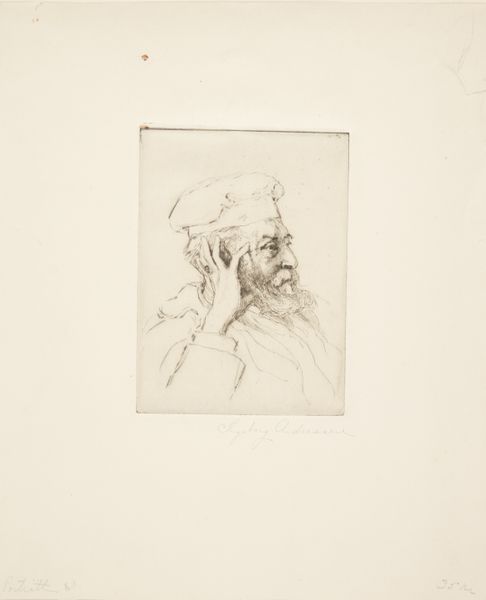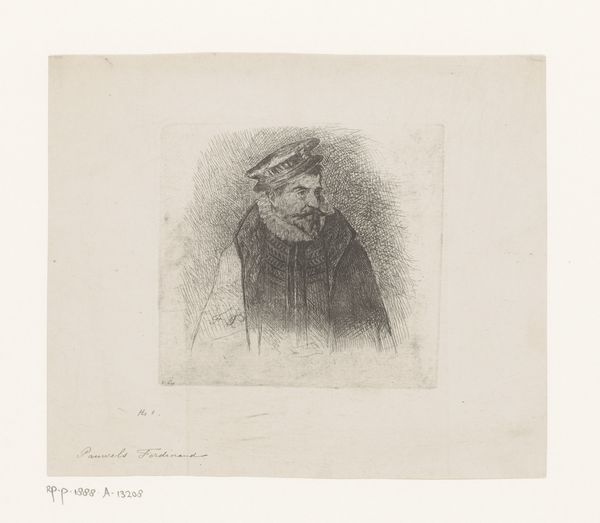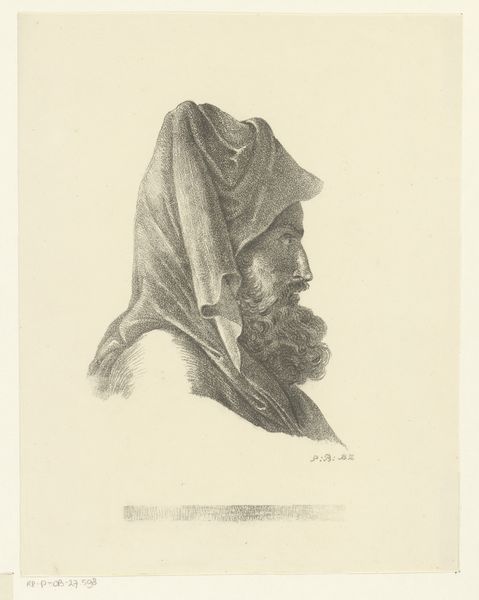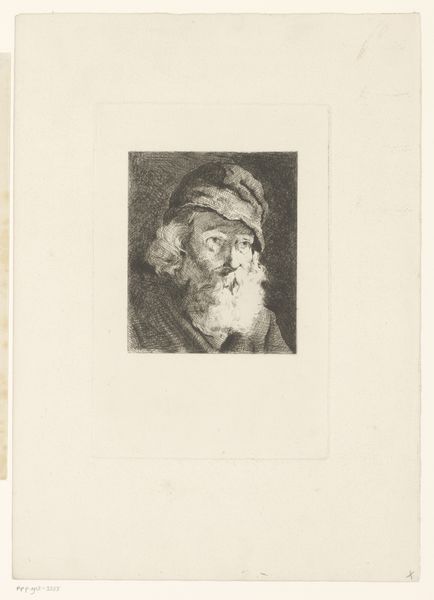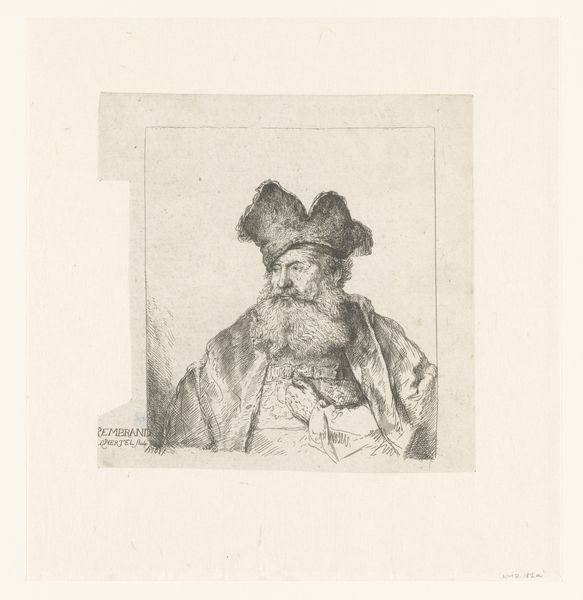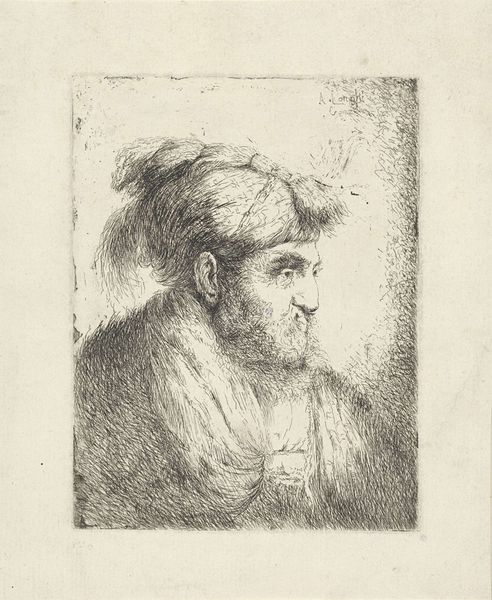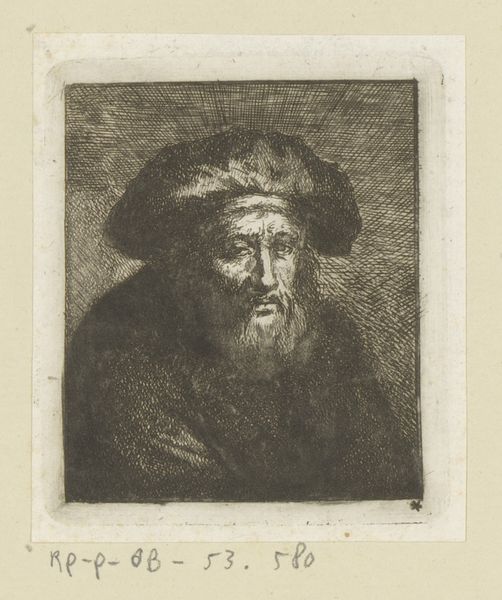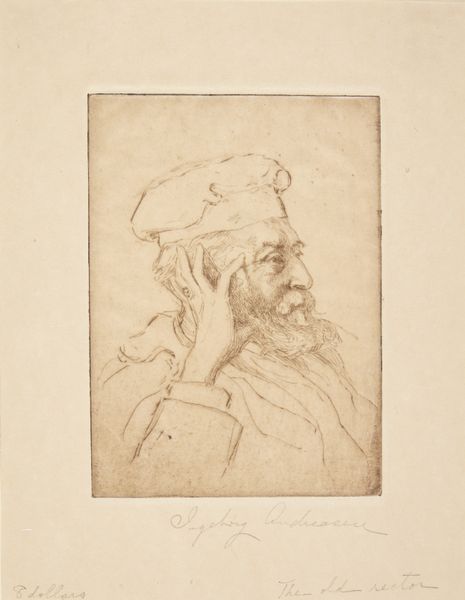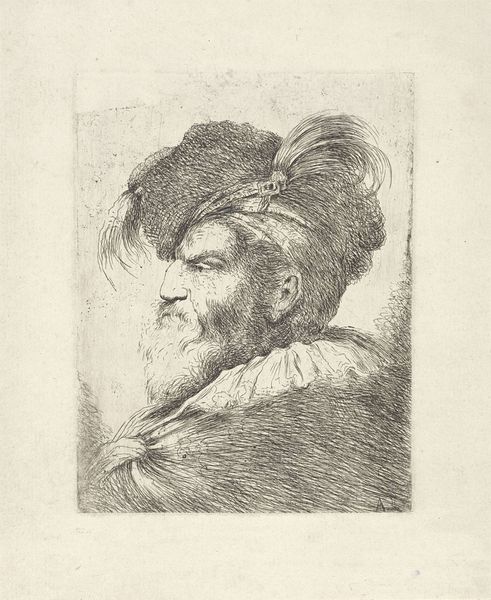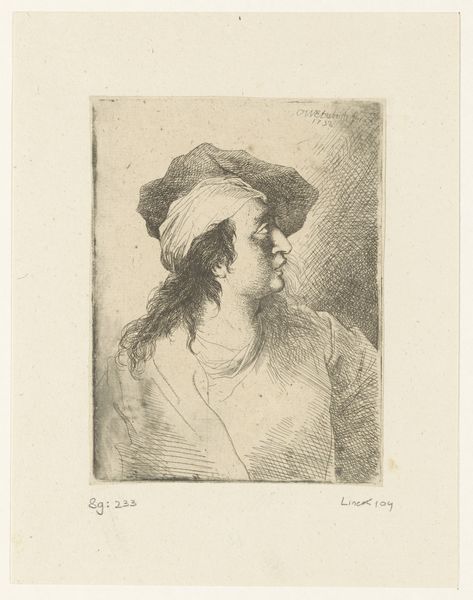
engraving
#
portrait
#
baroque
#
history-painting
#
engraving
Dimensions: height 76 mm, width 64 mm
Copyright: Rijks Museum: Open Domain
Editor: This is *Portret van een oude man met baard en muts*, or *Portrait of an old man with beard and hat*, an engraving by Antoine de Marcenay de Ghuy, from 1755. There's such incredible detail in the face – it feels like I can see his whole life etched into those lines. What stands out to you about this portrait? Curator: Well, seeing this piece, especially knowing it's an engraving done in the mid-18th century, my first thought goes to the politics of image-making at the time. Engravings played a vital role in circulating images and ideas, and their reproduction after renowned masters provided cultural capital. I would ask: who was this portrait meant to reach, and what did its maker hope to achieve through its distribution? Editor: That’s fascinating! I hadn't considered its distribution. Does the choice of subject matter play into that political and cultural context? Curator: Absolutely. Consider the deliberate imitation of Rembrandt's style – evident in the lighting and the character's turban – to create instant authority and prestige. The selection of an old man, possibly imagined as a historical or biblical figure, added gravitas, and the widespread reproductions allowed de Ghuy to partake in the canonization of "great art". This engraving enters into an established, recognizable iconography, lending importance both to the image and its author. Would you say it does a good job of this canonization? Editor: Definitely! Knowing that it aimed to align itself with artistic giants gives me a completely new perspective on what I initially saw as just a character study. Curator: Precisely. It highlights the role of institutions and artistic lineage in shaping the narrative around art and influence of imagery within a public discourse. Editor: This conversation made me appreciate that this engraving is more than just an aesthetic portrait, but a product and reflection of specific societal and cultural powers at play. Curator: Exactly! By examining these historical contexts, we unveil deeper layers of meaning and intended audiences in the artistic choices of the period.
Comments
No comments
Be the first to comment and join the conversation on the ultimate creative platform.
